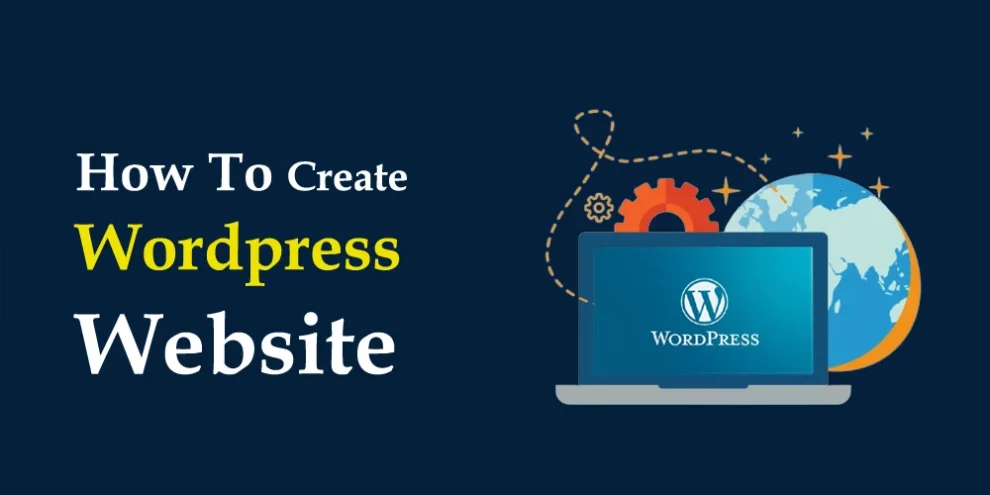1. Choose the Right Hosting and Domain
Choosing the proper foundation in terms of hosting and domain name ensures your WordPress site performs well and aligns with your brand. Consider these factors when deciding:
Shared Hosting
Shared hosting plans provide affordable options if you have a new or small business with low site traffic. However, they are less optimized for WordPress performance.
Managed WordPress Hosting
Specialized WordPress hosting often includes pre-installed WordPress support, automatic updates, caching for faster load times, and advanced security protections. This optimizes performance and security but costs more.
VPS or Dedicated Hosting
Virtual private servers (VPS) or dedicated hosting provides more server resources for higher traffic websites. It also allows for more customization control if you have an in-house IT team or developer.
Choose a Domain Name
Register a domain name that reflects your brand identity and is easy for customers to remember. Consider elements that are short, brandable, and clearly convey what you do.
2. Install and Set Up WordPress
Now that you have hosting and a domain, it’s time to get WordPress installed. The process differs slightly depending on your host and configuration but involves these basics:
One-Click Installation
Many managed WordPress hosts provide an automated installation tool that sets up WordPress quickly with just a few clicks.
Manual Installation
You can also manually install WordPress by downloading the WordPress files from WordPress.org and uploading them to your server via FTP. This provides more configuration flexibility.
Configure Basic Settings
Whether installing manually or automatically, be sure to configure your basic WordPress settings. This includes key items like your site title, tagline, language, categories, and permalink structure.
3. Select a Theme and Customize
Choosing the right theme provides the foundation for your website’s look and feel. Consider these factors when picking one:
Industry and Brand Alignment
Select a WordPress theme that aligns with your industry, brand image, color scheme and overall style preferences for fonts and imagery.
Free vs. Premium Themes
WordPress offers thousands of free themes to choose from, but premium themes often include better support, functionality and design customization. Evaluate your needs and budget to decide.
Customization Options
Many themes enable you to customize elements like fonts, colors, and page layouts through the built-in theme customizer and settings. More advanced users can also leverage child themes for extensive adaptations.
4. Install Essential Plugins
The right mix of plugins lets you add key functionalities to your WordPress site. Some recommendations to consider installing:
Yoast SEO
Improve your content for search engines while optimizing your site for organic traffic.
WPForms
Create custom contact forms, surveys, popups, and lead generation forms to capture website visitor information.
W3 Total Cache
Enhance website speed and performance through caching, content delivery network integration, and other optimizations.
BackupBuddy
Backup your WordPress database, files, and media on a customizable schedule to ensure website data stays protected.
Evaluate the core needs for your business and install plugins that enable key functionalities. The WordPress plugin repository offers over 55,000 options.
5. Create Engaging Content
Building your website is just the first step. You need valuable content to attract and engage visitors. Be sure to focus on:
Informative Blog Posts and Articles
Publish blog content and articles that provide information your audience finds useful. Entice them to subscribe to your email list.
Product Pages or Service Listings
Create dedicated pages showcasing your product catalog or service offerings so visitors fully understand what you do.
Landing Pages and Calls-to-Action
Strategically use landing pages, popups, banners, and calls-to-action to convert website visitors into leads and customers.
Search Engine Optimization
Employ SEO best practices when publishing and formatting content. This helps surface your web pages in search engines when users search relevant topics.
Remember, content development is an ongoing process. Continually add new posts and pages tailored to your audience and optimize existing ones.
6. Secure Your Website
Security threats exist even for WordPress sites not focused on e-commerce transactions. Be proactive in website security by:
Updating Software
Hackers target outdated software vulnerabilities. Using the latest WordPress core version and constantly updating plugins and themes closes security gaps.
Strong Passwords
Avoid common or brute force guessable passwords for all administrator logins. Leverage a password manager to create and store complex passwords.
Two-Factor Authentication
Adding an extra login verification step via SMS text message or authentication apps decreases the odds of unauthorized access significantly.
Security Plugins
Plugins like WordFence provide additional monitoring, malware detection, firewall rules, and scanning to identify threats before they cause harm.
7. Optimize for Mobile
With growing mobile device usage, ensuring a responsive mobile site experience is essential. Keep these guidelines in mind:
Responsive Design
Choose a mobile-friendly WordPress theme built to dynamically fit all screen sizes. This eliminates annoying zooming or horizontal scrolling.
Mobile Testing
Preview what your site looks like on multiple devices like mobile phones and tablets. Identify any display or functionality issues and fine tune them.
Mobile-First Mentality
Adopt a mobile-first mentality recognizing mobile drives significant and growing website traffic. Prioritize speed and experience on mobile over desktop.
8. Promote Your Website
You have an awesome looking and functioning WordPress website…now get visitors to it! Promote your site through:
Search Engine Optimization
Follow SEO best practices outlined above focusing on keyword research, metadata optimization, backlinks, site speed, etc. SEO drives organic search traffic.
Social Media Marketing
Leverage Facebook, Instagram, Twitter, LinkedIn and other platforms to share your new content. Embed share buttons on site to spread through networks.
Email Marketing
Send regular emails to website subscribers highlighting new content. Email converts much better than social media for driving site actions.
Online Advertising
Run Google Ads, Facebook ads and other pay-per-click campaigns to reach local customers searching for your products or services online.
Influencer Partnerships
Relevant bloggers or industry experts may organically mention your site or run sponsored reviews in exchange for free products/services.
Continue monitoring analytics to see which efforts perform best. Then double down on those high return activities.
Additional Tips
A few final recommendations for getting the most from WordPress for your business site:
Learn WordPress Basics
Invest time up front learning WordPress fundamentals even if you plan to outsource certain aspects later. Know what is possible and best practices.
Hire a Developer
Bring on a freelance WordPress developer if tackling complex customizations like custom post types, multi-lingual sites, custom functionality etc.
Connect with Other Users
The WordPress community offers a wealth of free tutorials, tips, and plugins. Plus, you can get advice from other users tackling similar projects.
Stay Updated
Be diligent about keeping your WordPress core, themes and plugins updated. Sign up for update notifications if possible to patch security issues when fixes are released.
By following these steps and tailoring them to your specific business needs, you can create a professional and effective website using WordPress that helps you achieve your business goals. Remember, building a successful website is an ongoing process, so be patient, experiment, and keep learning!
















Add Comment